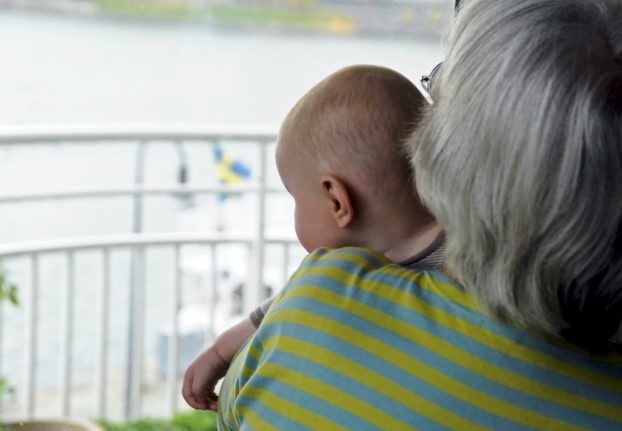Nordic citizens
Perhaps unsurprisingly, it’s easiest for Nordic citizens to retire in Sweden, as they enjoy unrestricted rights to live and work in any of the Nordic countries without the need for any kind of work or residence permits or EU residence documents.
This means that citizens of the Nordic countries can essentially just move to Sweden and register their arrival at the Tax Agency upon their arrival, bringing with them a passport or national ID card, as well as documentation proving their civil status (married, registered partner, single or divorced), and the birth certificate of any children moving with them.
EU citizens
The situation for EU citizens is similar to that of Nordic citizens.
EU citizens also report their move to the Tax Agency upon arrival in Sweden, and will need to show identity documents (such as a national ID card or passport), provide their full address in Sweden, including four-figure apartment number if applicable, as well as the name of whoever they are living with if they are living in someone else’s home.
They will also need to prove that they have EU right of residence. This can be done in a number of ways, including proof of work or proof of studies, but the relevant path for most retirees is proof of self-sufficiency, which essentially means documenting housing costs, including electricity and home insurance, and showing that you have some means of covering these financially, such as via a bank statement with a high enough balance, confirmation of a pension of a sufficient size, or an employment contract and payslip from another country, if the applicant is not planning on fully retiring straight away.
It’s also possible to prove self-sufficiency by providing a document or letter confirming that someone else can support you financially, along with a bank statement to back this up. There’s no application fee.
EU citizens may also need to provide proof of their civil status, whether they’re moving alone or with someone else.
Non-EU citizens
As a general rule, it’s not possible to retire to Sweden as a non-EU citizen unless your partner is a Swede or an EU citizen, or unless you’re a long-term resident of another EU country (if that applies to you, see below for details of these routes).
This is due to the fact that non-EU citizens need residency permits to live in Sweden, and these are only granted due to work, studies, or moving to live with someone who already has the right to live in Sweden.
If you don’t have a Swedish or EU partner but you have plans to retire to Sweden at some point in the future, you could in theory get a work permit in Sweden and work until you qualify for permanent residency, which usually means working in Sweden for at least five years.
Note that Sweden’s government is planning on reforming the permanent residency rules, so it’s likely that applicants choosing to do this would have to take language and civics tests in order to qualify for permanent residency in the future.
It is also likely that the residence requirement for permanent residency could be extended or otherwise altered within the next five years, so be prepared that the rules could change in the future if you do decide to go down this route.
What if only one of us is an EU citizen?
If you’re planning to move as a couple but only one of you is an EU citizen, the non-EU citizen should be able to qualify for a residence card as a family member of an EU citizen.
This allows the non-EU family member to live in Sweden as long as their EU citizen partner fulfils EU right of residence rules (by documenting self-sufficiency as explained above, for example). There is no application fee.
In order to get an EU residence card, the non-EU citizen must have a valid passport, be able to show that they belong to the same family as the EU citizen (through, for example, a marriage certificate or proof of cohabitation), and the EU citizen must be able to show that they meet the EU right of residence requirements.
This doesn’t just apply to partners or spouses of EU citizens either – it can be used for children of either parent aged 21 or under, or other family members who are financially dependent on the applicant (including children over 21 and parents, or anyone the applicant takes care of due to serious health reasons).
You may also need to provide proof that you are either covered by the social insurance system in your country of origin, or proof that you have taken out full-coverage private healthcare insurance for your stay in Sweden.
Swedes are not normally considered EU citizens in this context, unless they were recently living with their partner in another EU/EEA country or Switzerland. See below for the rules for couples consisting of a non-EU citizen and a Swede.
What if one of us is a non-EU citizen and the other is a Swede?
The process for non-EU citizens wishing to retire to Sweden with their Swedish partner varies, depending on where the couple lived before retiring.
If the couple lived together in another EU country (this includes the UK if they lived there together before Brexit), they can apply under the route described above for non-EU partners of EU citizens.
If that is not the case, they can apply for a residence permit to move to a spouse or cohabiting partner in Sweden, sometimes referred to as a “sambo visa” (sambo is the Swedish word for a cohabiting partner).
- Reader question: How do you meet the requirements for a sambo visa?
- The difficulties of moving to Sweden as a non-EU spouse… even if you marry a Swedish princess
In this case, the Swede must be able to support both themselves and their partner (which in 2023 meant having at least 9,445 kronor left after housing costs are paid each month), and have a house which is big enough – a home of at least one room with a kitchen or kitchenette, for a couple without children. The application fee is 2,000 kronor for an adult.
What about non-EU citizens who previously lived in Sweden?
In some cases, non-EU citizens who have previously held a permanent residence permit in Sweden are eligible for a new residence permit if they can prove sufficient ties to Sweden.
If they have been living abroad for three years or less, they must have lived in Sweden for at least four years in order to be eligible for a new permit.
Non-EU citizens living outside Sweden for more than three years must usually have lived in Sweden for at least ten years to qualify for a “returning to Sweden” permit, or if they can prove sufficient ties to Sweden in some other way.
The Migration Agency will assess your application to determine how strong your ties are to Sweden compared with your home country or the other country you have been living in since you left Sweden, and factors such as where you chose to have a family or whether your reasons for leaving Sweden were out of your control will be taken into account.
If your permit is granted, your partner or any other family member wishing to come with you will also need to apply for a permit to join you in Sweden, most likely a residence permit to move to a spouse or cohabiting partner in Sweden.
What about non-EU citizens who have long-term residence permits from another EU country?
In some cases, non-EU citizens who have lived in another EU country for at least five years are able to move to Sweden under EU freedom of movement rules.
This particular route applies to holders of the EC/EU residence permit for long term residents. This grants them certain rights similar to the rights of EU citizens, including the right to move to other EU countries to work, study, start a business or live off a pension.
Not all EU countries issue these permits – Denmark and Ireland do not issue long-term resident status cards to their non-EU residents – and they have different names in different countries, but if you have one of these cards you will be able to move to Sweden as long as you also fulfill the self-sufficiency rules for EU citizens. You will need to apply for the card in your country of residence before moving to Sweden.
You cannot, however, register your arrival at the Tax Agency, like EU citizens, and will instead need to apply for a residence permit from the Migration Agency within three months of arrival.
You will need to fill in this form (Application for a residence permit for persons who have long-term resident status in another EU state and their family members, 137011), and either hand it in directly to a Migration Agency permit service unit or post it to the Migration Agency office responsible for EEA and long-term residence permits. The fee costs 1,500 kronor for adults and adult family members, or 750 kronor for children under the age of 18.
What about Brits?
Brits moving to Sweden after December 31st, 2020 are subject to the same rules as non-EU citizens. This means that they will need to apply for a residence permit or a card proving right of residence as a family member of an EU citizen if they wish to move to Sweden, or will need to hold a EC/EU residence permit from another EU country.



 Please whitelist us to continue reading.
Please whitelist us to continue reading.
What about non EU citizens that have permanent residency in another EU country?
Hi!
Thanks for your question, I’ve added it into the article above, but essentially it depends on whether you have an EC/EU residence permit for long-term residents or not. This isn’t the same as a permanent residence permit.
Best,
Becky Waterton, The Local Sweden
We retired 4 years ago in Sweden coming from France. There is one point missing in your article, EU citizen also need to transition their health insurance. If you worked in Sweden before, this is not necessary as you are covered by Swedish health system already, Otherwise EU rules request that you first get a document from your home country health system since your health costs will be backcharged by Sweden to your original country.
What about a non EU financially dependent parent who has residence status of a British citizen. Can the parent get pension in Sweden if the parent register with the Tax office. Would that affect the fact that the parent’s residence status is based on financial dependency !
What about Swiss citizens ?